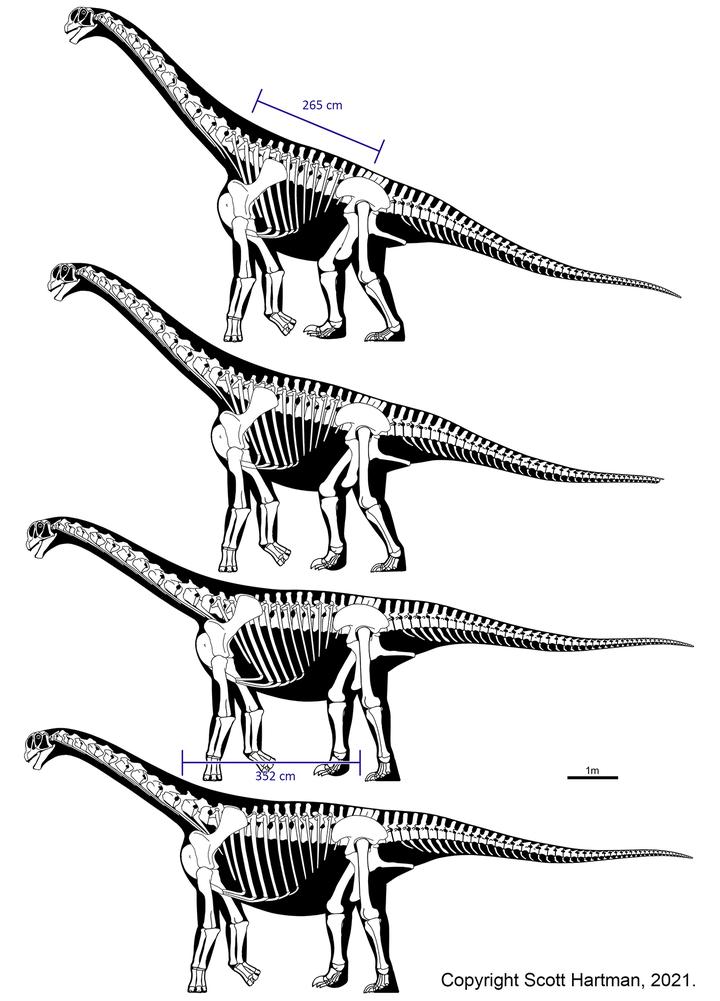Investigating the impact of competing interpretations of pectoral girdle placement and appendicular function on sauropod head height
 Competing models of pectoral girdle placement impact torso volume and orientation.
Competing models of pectoral girdle placement impact torso volume and orientation.Abstract
Previous attempts to reconstruct the posture and potential range of motion in the cervical series of sauropod dinosaurs have focused on restoring the osteological neutral position (ONP) of the axial column, as well as attempts to link ONP with the degree of habitual vertebral flexion observed in extant vertebrates (Stevens & Parrish, 2005; Taylor et al, 2009). While placement of the pectoral girdle has been examined in depth (e.g. Bonnan et al., 2005), the roll of differing interpretations of appendicular posture has been largely ignored. To evaluate the impact of competing functional interpretations of the pectoral girdle and appendicular skeleton, a quantitative analysis was conducted on the three most commonly used interpretations of pectoral girdle placement in the literature, and several models of limb kinematics. Testing was carried out on a 3D digital data set of Camarasaurus, as well as dimensionally-accurate skeletal diagrams of Camarasaurus and several other neosauropods to increase taxonomic sampling. Results show that differing interpretations of the angle of the scapula on the body had a minimal impact on the elevation of the presacral column, while the location of the pectoral girdle had a significant impact, with more ventrally and posteriorly located pectoral girdles leading to progressively higher head height. Published interpretations of forelimb posture in sauropods vary mostly in the orientation of the humerus and the degree of eversion in the elbow (e.g. Bonnan, 2003). Neither was found to have a significant impact on head height. Hind limb kinematics were found to have a larger impact on head height, as knee and ankle flexure reduced pelvic height, which in turn raised the cervical series. Differences in restoring the pes of sauropods differ markedly, from digitigrade to plantigrade; lowering the foot into a plantigrade stance was found to increase head height. These findings demonstrate that restoring the axial column alone is insufficient to accurately estimate head height in sauropods. Competing interpretations of pectoral girdle position and hind limb kinematics can influence the angle of the cervical series significantly, suggesting that a more holistic approach must be taken with regard to sauropod neck posture.